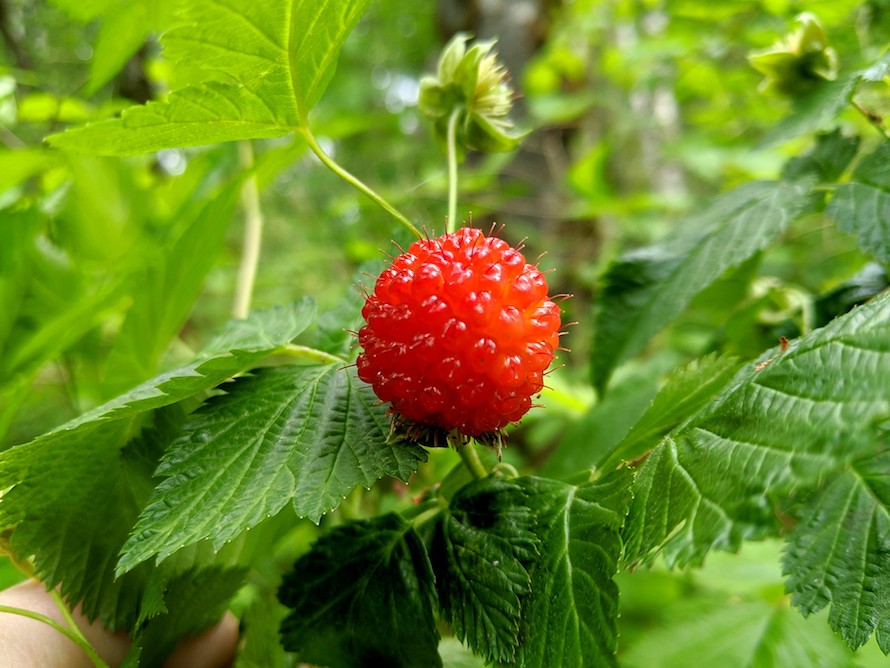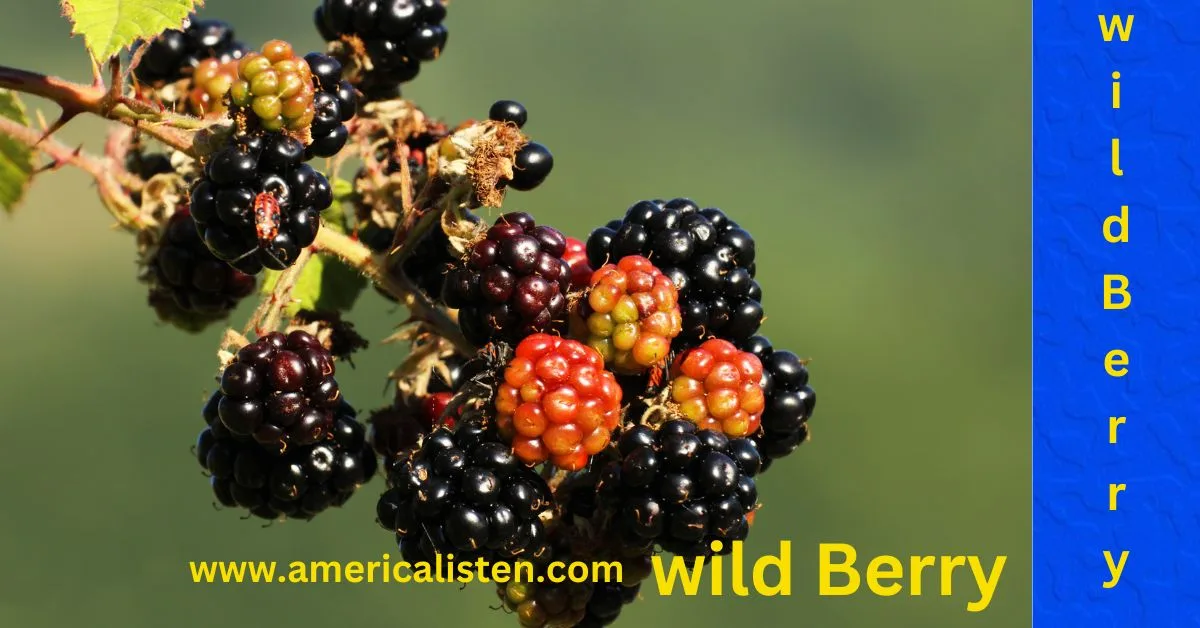Wild berry is nature’s hidden gem, scattered across forests, meadows, and untamed landscapes, waiting to be discovered by the curious forager or the avid nature enthusiast. These small, vibrant jewels of the wilderness captivate both the eye and the palate, offering a taste of the untamed world. With their intriguing flavors, varying colors, and often elusive presence, wild berries have a unique allure that distinguishes them from their cultivated counterparts. In this exploration, we delve into the enchanting realm of wild berries, uncovering their diverse species, the regions they call home, their culinary and nutritional significance, and the fascinating stories that surround these bountiful gifts of the wilderness. Whether you are a passionate berry picker or simply intrigued by the wonders of the natural world, join us on this journey as we unravel the secrets of wild berries and their place in the tapestry of our ecosystems and our lives.
Wild berries exhibit a captivating array of characteristics that distinguish them from cultivated fruits and make them a unique part of the natural landscape. Here are some key characteristics of wild berries:
Untamed Beauty: Wild berries grow in their natural habitat, often surrounded by lush foliage, providing a picturesque and untouched appearance. Their bright and varied colors, including shades of red, purple, blue, and black, add a vibrant touch to the wild landscapes.
Diverse Species: Wild berries encompass a wide range of species, each with its own distinct features, flavors, and growth patterns. Common examples include blackberries, raspberries, strawberries, blueberries, elderberries, and more, each offering a unique taste experience.
Seasonal Abundance: Wild berries follow the rhythms of nature, ripening at specific times of the year. Their availability is closely tied to the changing seasons, making them a seasonal delicacy for foragers and wildlife alike.
Small and Compact: Wild berries are typically smaller in size compared to their cultivated counterparts. Their modest dimensions make them easy to pluck and enjoy, often in their raw, natural state.
Complex Flavors: Wild berries are celebrated for their intense and complex flavors. They can be sweet, tart, or even slightly bitter, with a depth of taste that reflects the unique conditions of their growing environment.
Nutritional Powerhouses: Despite their small size, wild berries are packed with nutrients. They are known for their high levels of antioxidants, vitamins (such as Vitamin C and Vitamin K), dietary fiber, and various beneficial phytochemicals.
Ecological Significance: Wild berries play a crucial role in ecosystems. They provide food for a variety of wildlife, including birds, insects, and mammals. They are also important for plant reproduction, as animals that eat the berries help disperse the seeds.
Foraging Tradition: For centuries, wild berries have been a valuable food source for humans. Many cultures have a rich history of foraging for wild berries, using them in traditional recipes, and preserving them for the winter months.
Culinary Versatility: Wild berries find their way into a wide range of culinary creations, from jams and pies to salads and sauces. Their unique flavors can enhance both sweet and savory dishes, adding a touch of wildness to the plate.
Challenges of Harvest: While the allure of wild berries is undeniable, harvesting them can be challenging. Thorny bushes, stinging nettles, and the need to navigate wild terrain can make the pursuit of wild berries an adventurous and sometimes arduous endeavor.
Intriguing, diverse, and brimming with natural goodness, wild berries continue to enchant those who seek them, offering a delicious connection to the untamed beauty of the natural world.
Using wild berries in your culinary adventures can be a delightful and flavorful experience. Here are some creative and delicious ways to incorporate wild berries into your recipes:
Fresh and Raw: The simplest way to enjoy wild berries is to eat them fresh and raw. Wash them gently, remove any stems or leaves, and savor their natural flavors as a healthy snack or dessert.
Berries in Breakfast: Add wild berries to your morning routine. Sprinkle them on top of cereal, yogurt, or oatmeal for a burst of color and flavor. You can also blend them into smoothies for a refreshing start to your day.
Homemade Jams and Preserves: Wild berries are perfect for making homemade jams, jellies, and preserves. Combine them with sugar and a bit of lemon juice, then simmer until the mixture thickens. Store your preserves in sterilized jars for use throughout the year.
Berry Sauces: Create delectable berry sauces for pancakes, waffles, ice cream, or cheesecake. Cook wild berries with a touch of sugar and water until they break down into a luscious sauce. Strain if you prefer a smoother texture.
Baking Delights: Incorporate wild berries into your baking recipes. They make excellent additions to muffins, scones, pies, tarts, and cobblers. Fold them into the batter or use them as a filling.
Salads: Toss wild berries into your salads for a sweet and tangy contrast. They pair wonderfully with greens, goat cheese, nuts, and balsamic vinaigrette.
Wild Berry Compote: Make a berry compote by simmering wild berries with a bit of sugar and lemon juice until they become soft and syrupy. Serve it warm over pancakes, French toast, or vanilla ice cream.
Beverages: Wild berries can enhance your drinks. Muddle them in cocktails for a burst of flavor or infuse them in water for a refreshing and colorful twist.
Dessert Garnish: Use wild berries as a decorative garnish for desserts like panna cotta, custard, or chocolate fondue. They can add a touch of elegance to your sweet creations.
Trail Mix: Incorporate dried wild berries into homemade trail mix for a portable and nutritious snack. Combine them with nuts, seeds, and dried fruits for a balanced blend.
Fruit Leather: Turn wild berries into homemade fruit leather by pureeing them and then dehydrating the mixture. It’s a healthy and kid-friendly snack.
Freezing for Later: If you have an abundance of wild berries, freeze them for later use. Spread them on a baking sheet to freeze individually, then transfer them to a resealable bag for long-term storage. Frozen berries are perfect for smoothies and baking.
Savory Dishes: Don’t limit wild berries to sweet dishes. They can also add a unique twist to savory recipes. Consider making a wild berry sauce to pair with grilled meats or use them in chutneys for roasted poultry.

Remember to respect nature and sustainable foraging practices when collecting wild berries. Always verify the edibility of the berries and avoid picking from contaminated areas. With a little creativity, wild berries can bring the flavors of the wilderness to your kitchen, adding a touch of wild magic to your meals.
What constitutes a wild berry?
(countable) A wild berry refers to any untamed berry species that grows naturally in the wild, often including those that are edible and cultivated on a small scale. Wildberries typically come in smaller sizes compared to their domesticated counterparts.
Could you provide some examples of wild berries?
How to Identify Common Wild Berries – Farmers’ Almanac
Different regions boast their own unique berry varieties; for instance, the Pacific Northwest has salmonberries. However, there are three types of berries that are widely available for wild harvesting across the United States. These include blackberries, raspberries, and elderberries.
Which wild berry is considered the healthiest?
The 8 Healthiest Berries You Can Consume
Here are some of the healthiest berry options:
Blueberries: Renowned for their vitamin K content.
Raspberries: A rich source of dietary fiber.
Goji berries.
Strawberries.
Bilberries.
Açaí berries.
Cranberries.
Grapes.
Is a berry classified as a fruit or a vegetable?
In botanical terms, a berry is considered a simple fleshy fruit, often containing numerous seeds. Examples of berries include bananas, grapes, and tomatoes. These fruits originate from a single ovary of an individual flower, with the inner and middle layers of their fruit walls frequently indistinct from each other.
Why are they called “wild berries”?
The term “wild berries” encompasses a diverse group of berry species found in the wild. It’s a general descriptor for fresh fruit that includes other synonyms like “small fruit” or “fruit of the forest.”

Are wild berries considered fruits?
Wild Berries and Their Advantages | Herbal Essences
Wild berries fall under the category of fruits. A berry, in essence, is a small, pulpy fruit that is often edible. Berries are typically juicy, rounded, brightly colored, and can be sweet, sour, or tart. They usually lack a stone or pit, although they may contain many pips or seeds.
Are blueberries the same as kala jamun?
No, despite both being highly nutritious fruits, blueberries belong to the Ericaceae family, whereas kala jamun belongs to the Myrtaceae family.
Which berry is best for skin health?
Berries such as blueberries and strawberries are excellent choices for promoting healthy skin. They are rich in essential nutrients, particularly Vitamin A and Vitamin C, which are crucial for maintaining smooth and naturally radiant skin.
Are berries suitable for vegetarians?
Absolutely! Berries are vegetarian-friendly and can easily replace animal products in your diet. You can enjoy a variety of vegetables and fruits, including tomatoes, cabbage, beetroot, pumpkin, garlic, olives, broccoli, apples, nectarines, berries, bananas, melons, and oranges as part of a vegetarian diet.
Are wild berries nutritious?
Much like their commercially cultivated counterparts, wild berries are packed with essential nutrients and bioactive compounds that have the potential to prevent or delay certain chronic diseases linked to oxidative stress and chronic inflammation.
Which berry is considered a superfood?
Superfoods: Antioxidant-Rich Berries Beyond Blueberries …
Blueberries are often classified as a superfood due to their high levels of antioxidants, blood pressure-lowering properties, and the fact that just 2/3 cup provides 14 percent of your daily fiber intake.
How many berries should one consume daily?
I recommend incorporating at least one daily serving of berries into your diet, which can be in the form of half a cup of fresh or frozen berries or a quarter cup of dried berries. Additionally, aim for three daily servings of other fruits, which could include a medium-sized fruit, a cup of cut-up fruit, or a quarter cup of dried fruit. Berries are particularly highlighted due to their exceptional health benefits, including their rich pigment content.
Are wild berries typically organic?
5 Things You Didn’t Know About Wild Blueberries | Wild …
Organic Wild Blueberries are available, but it’s important to note that not all Wild Blueberries are organic. If you specifically seek organic Wild Blueberries, be sure to check the packaging label for verification.

Do berries raise blood sugar levels?
In addition to their polyphenol content, whole berries are a significant source of dietary fiber. This fiber has been shown to delay gastric emptying and reduce glucose absorption, leading to a decrease in the post-meal rise of blood glucose levels.
Do wild berries contain protein?
Wild Blueberry Nutrition 101: Your Checklist to Better Health
Nordic wild blueberries, in fact, contain more antioxidants, fibers, and proteins compared to their domesticated counterparts. These wild blueberries offer approximately 800mg of antioxidants per 100g and about 0.7g of protein per cup, along with 3.6g of fiber per cup.
To know more about wild Berry Please click HERE
YOU MAY LIKE :
Lychee: Secret Power, The Exotic Fruit That Will Transform Your Health and Tantalize Your Taste Buds


